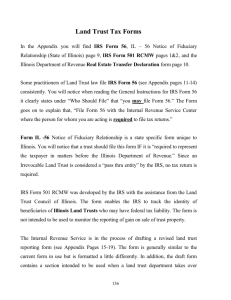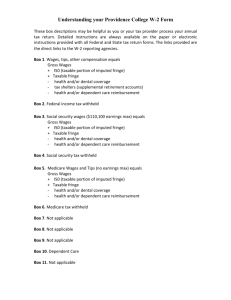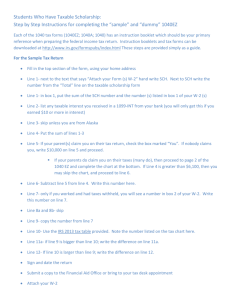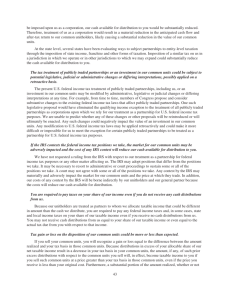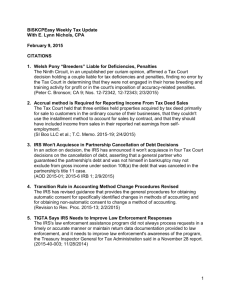Group Term Life Insurance – IRS Regulations
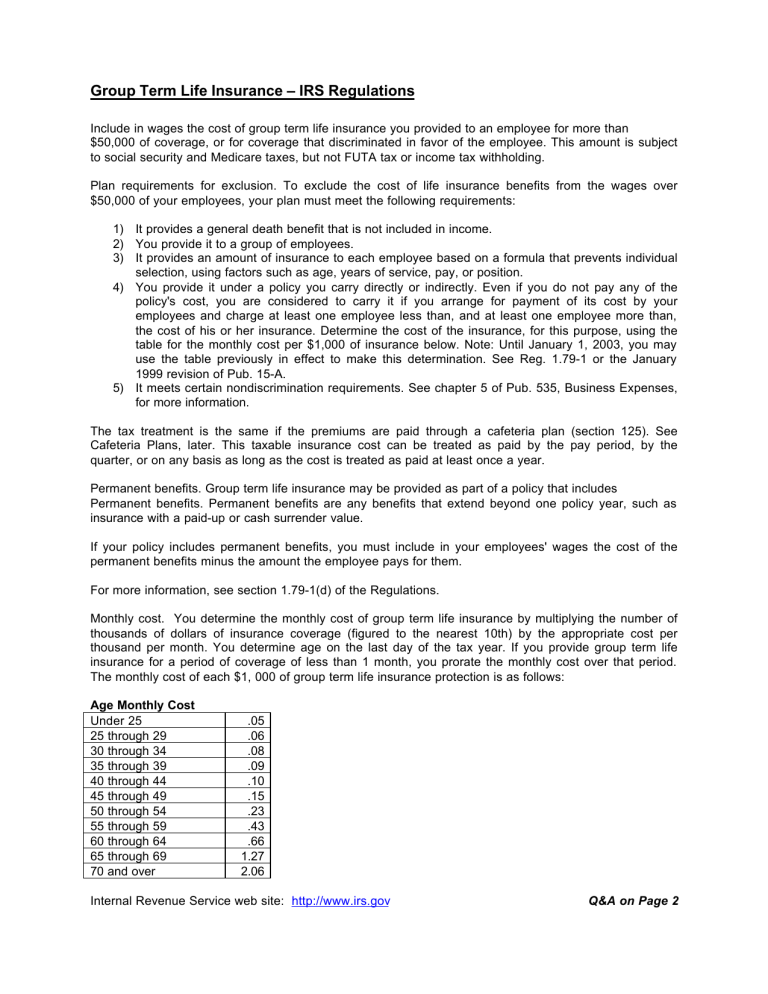
Group Term Life Insurance – IRS Regulations
Include in wages the cost of group term life insurance you provided to an employee for more than
$50,000 of coverage, or for coverage that discriminated in favor of the employee. This amount is subject to social security and Medicare taxes, but not FUTA tax or income tax withholding.
Plan requirements for exclusion. To exclude the cost of life insurance benefits from the wages over
$50,000 of your employees, your plan must meet the following requirements:
1) It provides a general death benefit that is not included in income.
2) You provide it to a group of employees.
3) It provides an amount of insurance to each employee based on a formula that prevents individual selection, using factors such as age, years of service, pay, or position.
4) You provide it under a policy you carry directly or indirectly. Even if you do not pay any of the policy's cost, you are considered to carry it if you arrange for payment of its cost by your employees and charge at least one employee less than, and at least one employee more than, the cost of his or her insurance. Determine the cost of the insurance, for this purpose, using the table for the monthly cost per $1,000 of insurance below. Note: Until January 1, 2003, you may use the table previously in effect to make this determination. See Reg. 1.79-1 or the January
1999 revision of Pub. 15-A.
5) It meets certain nondiscrimination requirements. See chapter 5 of Pub. 535, Business Expenses, for more information.
The tax treatment is the same if the premiums are paid through a cafeteria plan (section 125). See
Cafeteria Plans, later. This taxable insurance cost can be treated as paid by the pay period, by the quarter, or on any basis as long as the cost is treated as paid at least once a year.
Permanent benefits. Group term life insurance may be provided as part of a policy that includes
Permanent benefits. Permanent benefits are any benefits that extend beyond one policy year, such as insurance with a paid-up or cash surrender value.
If your policy includes permanent benefits, you must include in your employees' wages the cost of the permanent benefits minus the amount the employee pays for them.
For more information, see section 1.79-1(d) of the Regulations.
Monthly cost. You determine the monthly cost of group term life insurance by multiplying the number of thousands of dollars of insurance coverage (figured to the nearest 10th) by the appropriate cost per thousand per month. You determine age on the last day of the tax year. If you provide group term life insurance for a period of coverage of less than 1 month, you prorate the monthly cost over that period.
The monthly cost of each $1, 000 of group term life insurance protection is as follows:
Age Monthly Cost
Under 25
25 through 29
30 through 34
35 through 39
40 through 44
45 through 49
50 through 54
55 through 59
60 through 64
65 through 69
70 and over
.05
.06
.08
.09
.10
.15
.23
.43
.66
1.27
2.06
Internal Revenue Service web site: http://www.irs.gov
Q&A on Page 2
Question & Answer
Question : Why is this affecting my paycheck?
Answer : IRS Regulations require that the value of company provided life insurance in excess of $50,000 must be added to your taxable wages. A table provided by the IRS determines the value of the life insurance.
Question : What is Group Term Life Insurance?
Answer : Group Term Life Insurance is also referred to as Company Paid Basic Life Insurance. If you are a
Full Time employee or a Term of Project Full Time employee, the company provides you with 2x your benefit base. If you are a Short Hour or Term of Project Short Hour employee the company provides you with 1x your benefit base.
Question : Who does this effect?
Answer : All active and terminated benefit eligible employees with company paid life insurance in excess of
$50,000.
Question : How does this effect my net pay?
Answer : W2GRP reduces net pay by the taxes calculated on Group Term Life, based on your filing status, number of exemptions, and your tax bracket.
Internal Revenue Service web site: http://www.irs.gov





